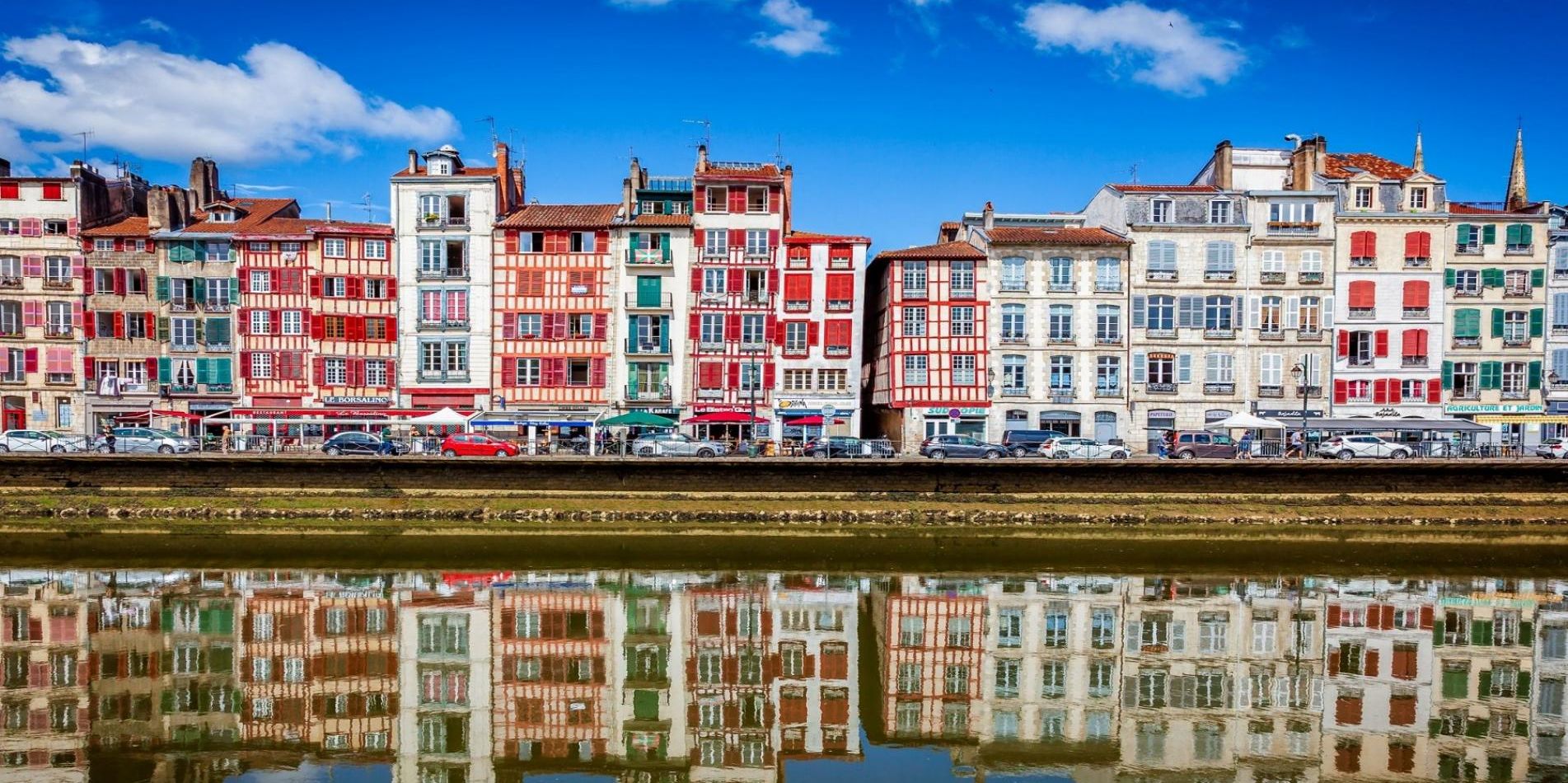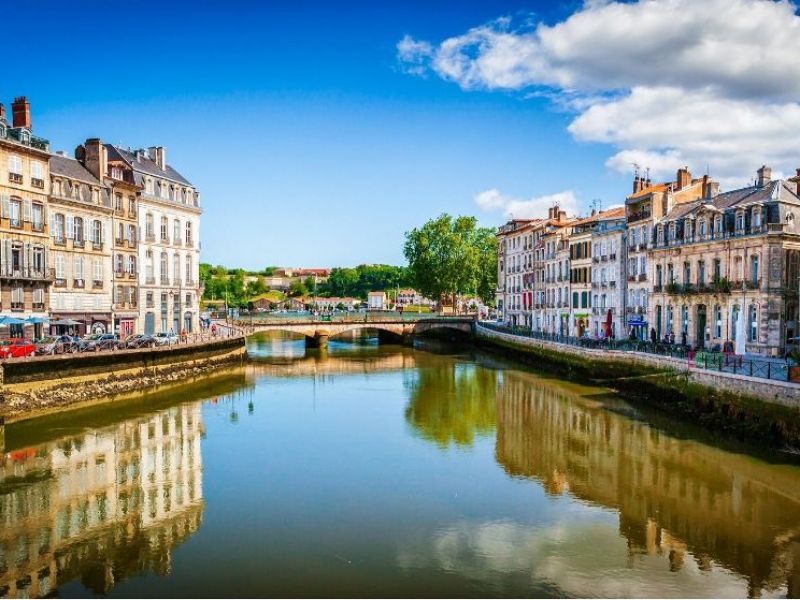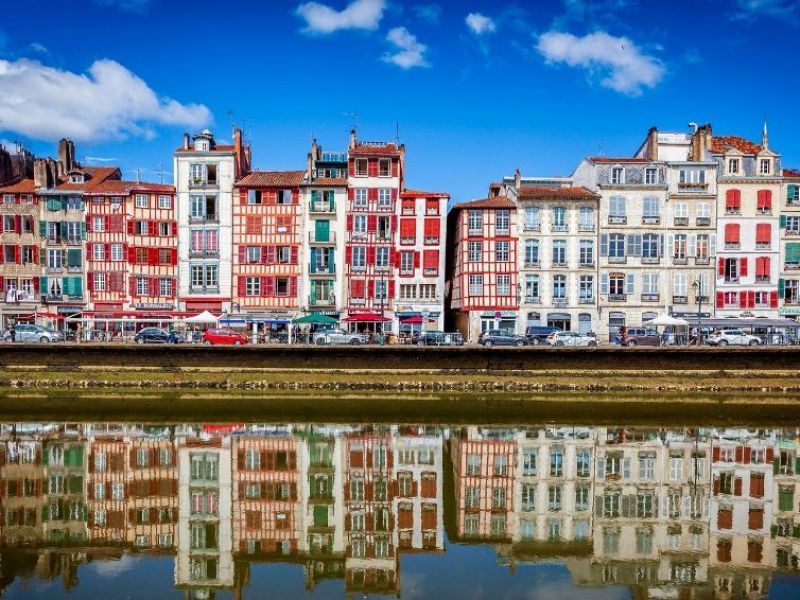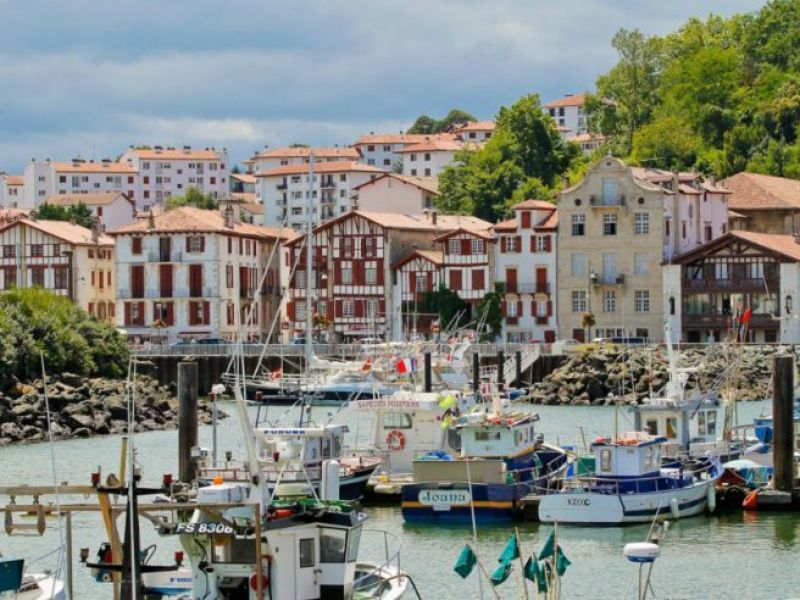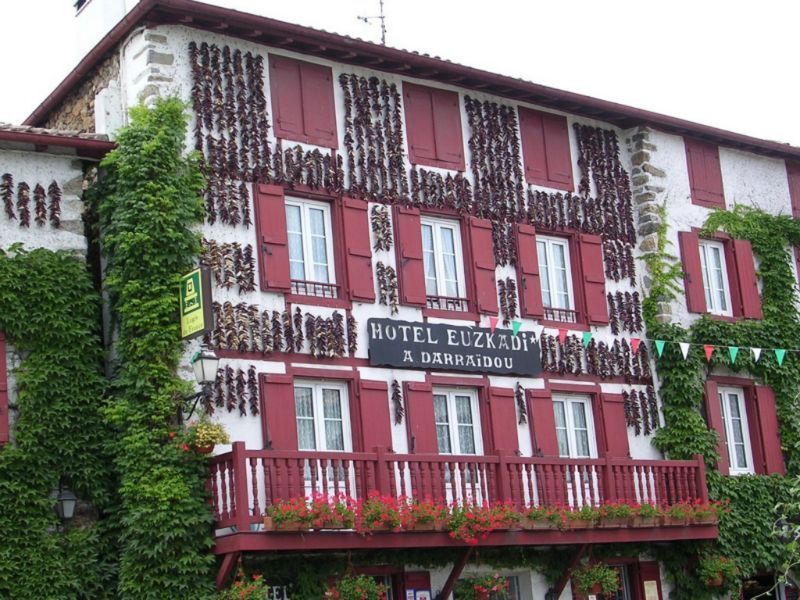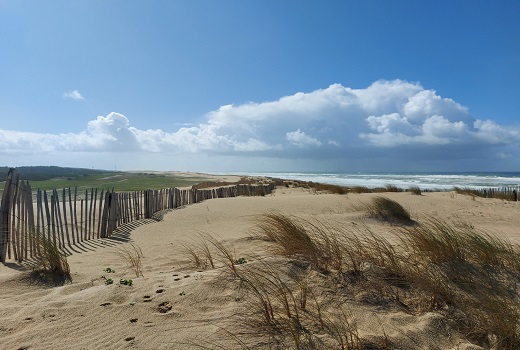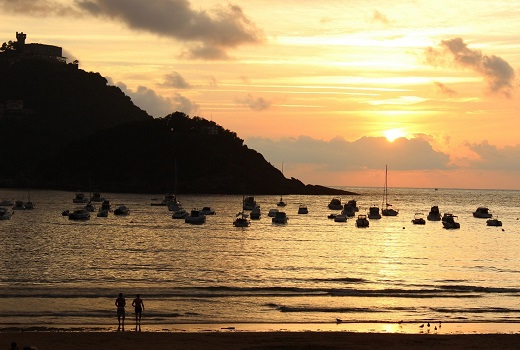The Basque Country is part of the Pyrénées-Atlantiques department, including the Béarn. It is located in the extreme south-west of France and stretches as far south as the Adour, between the Atlantic coast, the Pyrenees and the Béarn. To discover the Basque Country is to enter a world of traditions and culture. The Basque Country reveals its treasures: castles, churches, monasteries, caves, museums... as well as nature. As far as typical products are concerned, there are many well-known products such as the various seafood products, Espelette peppers, sheep's cheeses, Bayonne ham, chocolate, Basque cakes filled with almond cream or black cherries, as well as Irulegui wine, cider and pacharan. Between Gascon and Landes influences in the north, and Spanish in the south, Basque gastronomy is very rich.
The most beautiful villages in the Basque country:
During your stay in the Basque Country, don't hesitate to visit one of the most beautiful villages:
Ascain:
Situated 6 km from the ocean, Ascain is a pretty village with characteristic houses and a central pediment. Near the village, the summit of the Rhune rises to 950m. Discover the small tourist train that takes you to the top. From the top, you will have a magnificent view over the bay of Saint-Jean-de-Luz.
Sare:
Nestled in a French part and extending into Spanish Navarre, Sare is classified "Most beautiful village in France" with its 17th and 18th century Basque houses. Several visits are possible, such as the Ortillopitz Basque house, built in 1660, the grotto of Sare or the Basque cake museum.
Aïnhoa:
This village also has the label "Most beautiful village in France". Founded in the 13th century, it was a stopping place for pilgrims on the Way of St. James. Don't miss its church with its gilded choir, its altarpiece and its galleries. The Gorritia house is also worth a visit.
Espelette:
Well known for the Espelette pepper, this condiment is celebrated every year in October. In the village, Espelette peppers are traditionally hung on the façades of houses to dry.

